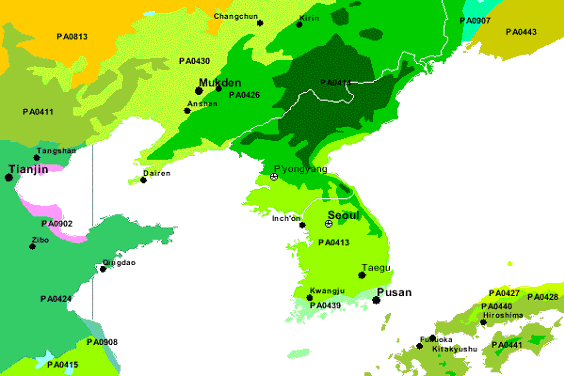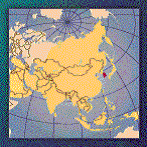 <<back || index || next>>
South Korea
South KoreaGEOGRAPHY
(CIA: http://www.cia.gov/cia/publications/factbook/index.html) GEODYNAMICS
(Acadia University: http://ace.acadiau.ca/science/geol/rraeside/quizzes/world-notes.htm) ELECTRICITY
(EIA: http://www.eia.doe.gov/emeu/cabs/skorea2.html) GEOTHERMAL ELECTRICITY GENERATION & GEOTHERMAL POTENTIAL
(IGA: http://iga.igg.cnr.it/korea.php) CONSIDERATIONSWORLD HERITAGE
NATIONAL PARKS AND RESERVESNational Parks of Korea
|
||||||||||||||||||||||||||||||||||||||||||||||||||||||||||||||||||||||||||||||||||||||||||||||||||||||||||||||||||||||||||||||||||||||||||||||||||||||||||||||||||||||||||||||||||||||||||||||||||||||||||||||||||||||||||||||||||||||||||||||||||||||||||||||||||||||||||||||||||||||||||||||||||||||||||||||||||||||||||||||||||||||||||||||||||||||||||||||||||||||||||||||||||||||||||||||||||||||||||||||||||||||||||||||||||
|
Name of Park
|
Location (Province)
|
Park Area
|
Park Protection Area
|
Remarks
|
||||||||||
|
Designation |
Area |
|||||||||||||
|
Total rank |
6,473.113 (1,958) |
122.207 (37) |
Land Terrain: 3,824. 57(3.8%) Sea Terrain: 2,648.543(2.7%) *6.5% of national land |
|||||||||||
|
1 |
Jirisan |
Jeollanam-do, Jeollabuk-do, Gyeongsangnam-do |
67.12.29 |
440.485 |
35.225 |
|||||||||
|
2 |
Gyeongju |
Gyeongsangbuk-do |
68.12.31 |
138.16 |
- |
|||||||||
|
3 |
Gyeryongsan |
Chungcheongnam -do, Daejeon |
68.12.31 |
61.148 |
2.160 |
|||||||||
|
4 |
Hallyeo- haesang |
Jeollanam-do, Gyeongsangnam-do |
68.12.31 |
510.323 |
34.700 |
Sea Terrain: 344.763 |
||||||||
|
5 |
Seoraksan |
Gangwon-do |
70. 2.34 |
373.0 |
4.70 |
|||||||||
|
6 |
Songnisan |
Chungcheongbuk-do, Gyeongsangbuk-do |
70. 3.24 |
283.4 |
1.02 |
|||||||||
|
7 |
Hallasan |
Jeju-do |
70. 3.24 |
149.0 |
2.35 |
|||||||||
|
8 |
Naejangsan |
Jeollanam-do Jeollabuk-do |
71.11.17 |
76.032 |
12.561 |
|||||||||
|
9 |
Gayasan |
Gyeongsangnam-do Gyeongsangbuk-do |
72.10.13 |
80.163 |
4.393 |
|||||||||
|
10 |
Deogyusan |
Jeollabuk-do, Gyeongsangnam-do |
75. 2. 1 |
219.0 |
- |
|||||||||
|
11 |
Odaesan |
Gangwon-do |
75. 2. 1 |
298.5 |
1.98 |
|||||||||
|
12 |
Juwangsan |
Gyeongsangbuk-do |
76. 3.30 |
105.582 |
0.698 |
|||||||||
|
13 |
Taean- haean |
Chungcheongnam-do |
78.10.20 |
328.99 |
0.09 |
Marine Terrain: |
||||||||
|
14 |
Dadohae haesang |
Jeollanam-do |
81.12.23 |
2,344.91 |
- |
Sea Terrain: |
||||||||
|
15 |
Bukhansan |
Seoul, Gyeonggi |
83. 4. 2 |
78.45 |
- |
|||||||||
|
16 |
Chiaksan |
Gangwon-do |
84.12.31 |
182.09 |
2.34 |
|||||||||
|
17 |
Woraksan |
Chungcheongbuk-do, Gyeongsangbuk-do |
84.12.31 |
284.5 |
3.172 |
|||||||||
|
18 |
Sobaeksan |
Chungcheongbuk-do, Gyeongsangbuk-do |
87.12.14 |
320.5 |
- |
|||||||||
|
19 |
Wolchulsan |
Jeollanam-do |
88. 6.11 |
41.88 |
16.818 |
|||||||||
|
20 |
Byeonsanban-do |
Jeollabuk-do |
88. 6.11 |
157.0 |
- |
Sea Terrain: |
||||||||
Number of provincial parks: 22 sites/ 747.855 ( 0.7% of total land)
Number of county parks: 29 sites/ 307.862 (0.2% of total land)
(National Park Authority: http://www.npa.or.kr/eng/npk/npg/nat.htm)
VULNERABLE/ENDANGERED ECOREGIONS
- Central Korean deciduous forests (PA0413)
- Manchurian missed forests (PA0426)
- Southern Korea evergreen forests (PA0439)
(WWF: http://www.worldwildlife.org/wildworld/profiles/terrestrial_pa.html)
GEOGRAPHIC LOCATION OF ECOREGIONS

POPULATION DISTRIBUTION
Population By Administrative District (person)
|
2000 |
|
|
Whole country |
45,985,289 |
|
Total for cities |
|
|
Total for counties |
|
|
Total for eups |
3,742,053 |
|
Total for myeons |
5,600,788 |
|
Total for dongs |
|
|
Seoul |
9,853,972 |
|
Busan |
3,655,437 |
|
Daegu |
2,473,990 |
|
Incheon |
2,466,338 |
|
Gwangju |
1,350,948 |
|
Daejeon |
1,365,961 |
|
Ulsan |
1,012,110 |
|
Gyeonggi-do |
8,937,752 |
|
Gangwon-do |
1,484,536 |
|
Chungcheongbuk-do |
1,462,621 |
|
Chungcheongnam-do |
1,840,410 |
|
Jeollabuk-do |
1,887,239 |
|
Jeollanam-do |
1,994,287 |
|
Gyeongsangbuk-do |
2,716,218 |
|
Gyeongsangnam-do |
2,970,929 |
|
Jeju-do |
512,541 |
|
Hwanghae province |
|
|
Pyeonganbuk-do |
|
|
Pyeongannam-do |
|
|
Hamgyeongbuk-do |
|
|
Hamgyeongnam-do |
Table Comments:
- Figures for whole and total of each province include those of residence unknown.
- Figures for Seoul and total of each Gu district include those of residence unknown.
- Figures for province and total of Si or Gun districts include those of residence unknown.
- Excludes foreigners.
- Exclude Korean diplomats and their families in abroad (about 1200 persons) in 1970.
(Korea National Statistical Office: http://www.nso.go.kr/cgi-bin/sws_888.cgi?ID=DT_1IN0001&IDTYPE=3&A_LANG=2&FPUB=4&SELITEM=)
References
- Acadia University. Significant places for global
tectonics. Retrieved from world wide web: http://ace.acadiau.ca/science/geol/rraeside/quizzes/world-notes.htm(October
24, 2002)
- Central Intelligence Agency (CIA). (January 2002).
The world factbook 2002 – South Korea. Retrieved
from world wide web: http://www.cia.gov/cia/publications/factbook/index.html
September 10, 2002)
- Energy Information Administration (EIA). (August,
2002). Country analysis briefs – South Korea. Retrieved
from world wide web: http://www.eia.doe.gov/emeu/cabs/skorea2.html
(October 2, 2002)
- International Geothermal Association (IGA). (May
9, 2002). Welcome to our page with data for South
Korea. Retrieved from world wide web: http://iga.igg.cnr.it/korea.php
(October 2, 2002)
- Korea National Statistical Office. Census population
by administrative district. Retrieved from world
wide web: http://www.nso.go.kr/cgi-bin/sws_888.cgi?ID=DT_1IN0001&IDTYPE=3&A_LANG=2&FPUB=4&SELITEM=
(December 27, 2002)
- National Park Authority. National parks of Korea.
Retrieved from world wide web: http://www.npa.or.kr/eng/npk/npg/nat.htm
(October 20, 2002)
- National Geographic. Wild world – Terrestrial
ecoregions of the world. Retrieved from world wide
web: http://www.nationalgeographic.com/wildworld/terrestrial.html?id=1&mapServiceName=WW_Terrecos
&locWidth=120&locHeight=72&cMinx=141.8004&cMiny=45.914108&cMaxx=142.666901
&cMaxy=47.798401&size=small&detail=detailed?id=1&size=small&detail=detailed&cMinx=142.23
&cMiny=41&cMaxx=185.43&cMaxy=69.13 (October 20 2002)
- World Wildlife Fund (WWF). Ecoregions. Retrieved from world wide web: http://www.worldwildlife.org/wildworld/profiles/terrestrial_pa.html (November 24, 2002)
Email this page to a friend


